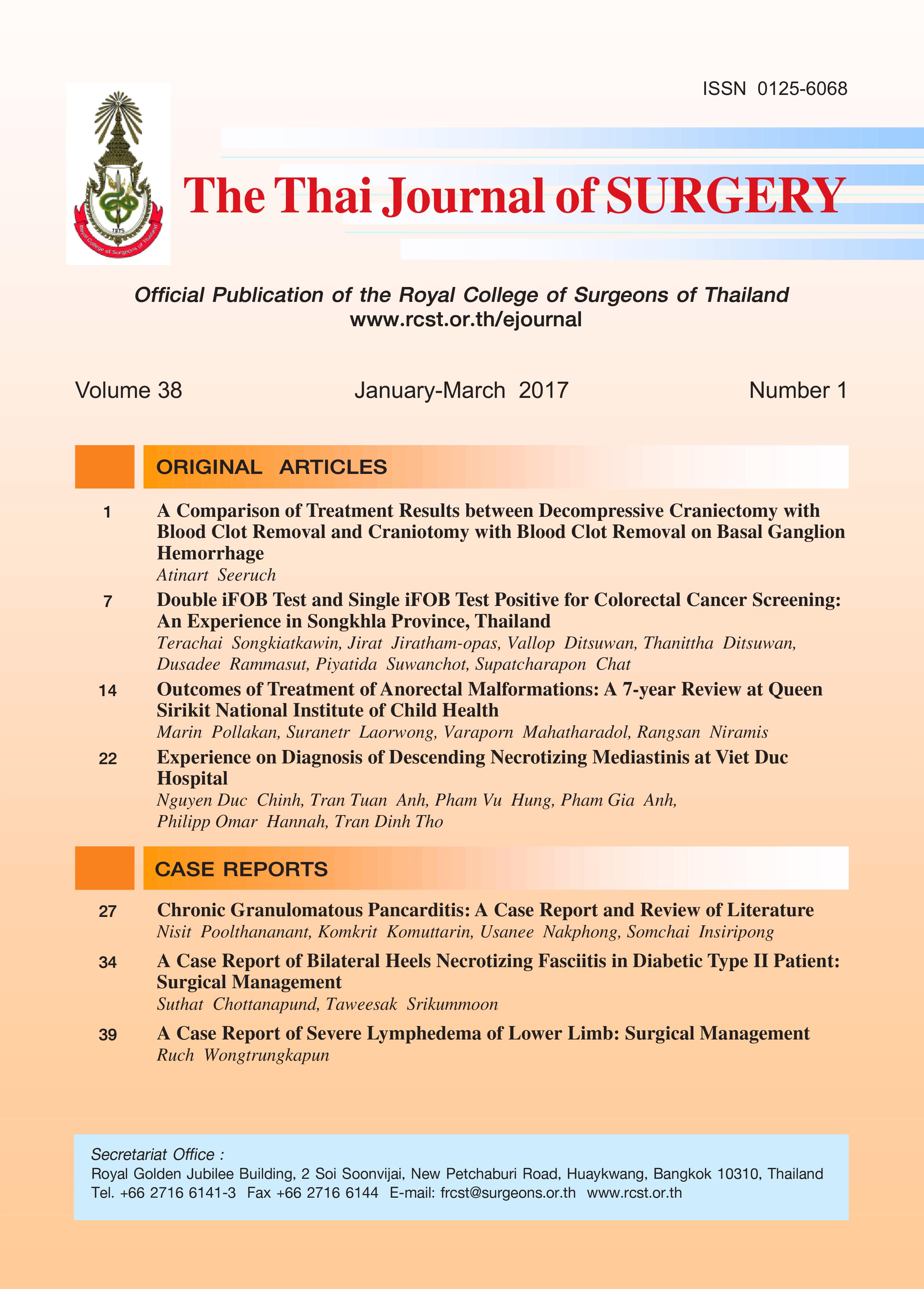A Case Report of Bilateral Heels Necrotizing Fasciitis in Diabetic Type II Patient: Surgical Management
Keywords:
Necrotizing fasciitis, diabetic type II, heel woundAbstract
Objective: The heel ulcer itself usually requires special care for healing. Multidisciplinary treatment approach is needed to heal the chronic diabetic heel ulcer patient. While most of the cases ended up with primary limb amputation, we reported a successful case management of the bilateral chronic diabetic heel ulcer.
Method: A case report by history taking and patient’s chart review
Result and Conclusion: Amputation of heel significantly ended up with limb amputation, because of the inadequate blood circulation and infection. Superimposition on diabetes contribute to more serious complication of heel ulceration. A good assessment of affected limb vascular supply and a good blood sugar control are critical success factors in heel ulcer healing. Multidisciplinary team approach is necessary in caring for this group of patients. Simple surgical techniques such as debridement, partial bone excision, and primary wound closure are enough to heal heel wound in a good vascular supply and good blood sugar control patient.
References
2. Price J, Boulton Z. Case 13: chronic painful ulcer on the heel of a diabetic foot. J Wound Care 2016;25(3 Suppl):S21.
3. Vanderwee K, Clark M, Dealey C, Gunningberg L, Defloor T. Pressure ulcer prevalence in Europe: a pilot study. J Eval Clin Pract 2007;13:227-35.
4. Pedras S, Carvalho R, Pereira MG. Quality of Life in Portuguese Patients with Diabetic Foot Ulcer Before and After an Amputation Surgery. Int J Behav Med 2016 Aug 5.
5. Demarre L, Van Lancker A, Van Hecke A, Verhaeghe S, Grypdonck M, Lemey J, et al. The cost of prevention and treatment of pressure ulcers: A systematic review. Int J Nurs Stud 2015;52:1754-74.
6. Clarkson A. Managing a necrotic heel pressure ulcer in the community. Br J Nurs 2003;12(6 Suppl):S4-12.
7. Forsythe RO, Hinchliffe RJ. Assessment of foot perfusion in patients with a diabetic foot ulcer. Diabetes Metab Res Rev 2016 Jan;32 Suppl 1:232-8.
8. Parisi MC, Moura Neto A, Menezes FH, Gomes MB, Teixeira RM, de Oliveira JE, et al. Baseline characteristics and risk factors for ulcer, amputation and severe neuropathy in diabetic foot at risk: the BRAZUPA study. Diabetol Metab Syndr 2016;8:25.
9. Pinzur MS, Cavanah Dart H, Hershberger RC, Lomasney LM, O’Keefe P, Slade DH. Team approach: treatment of diabetic foot ulcer. JBJS Rev 2016;4.
10. Amin N, Doupis J. Diabetic foot disease: From the evaluation of the “foot at risk” to the novel diabetic ulcer treatment modalities. World J Diabetes 2016;7:153-64.
11. Faglia E, Clerici G, Caminiti M, Vincenzo C, Cetta F. Heel ulcer and blood flow: the importance of the angiosome concept. Int J Low Extrem Wounds 2013;12:226-30.
12. Chammas NK, Hill RL, Edmonds ME. Increased mortality in diabetic foot ulcer patients: the significance of ulcertype. J Diabetes Res 2016;2016:2879809.
13. Russell L, Reynolds TM. Heel ulcer prevention. J Wound Care. 2001;10:222; author reply
14. Dunk AM, Carville K. The international clinical practice guideline for prevention and treatment of pressure ulcers/injuries. J Adv Nurs 2015;72:243-4.
15. Iraj B, Khorvash F, Ebneshahidi A, Askari G. Prevention of diabetic foot ulcer. Int J Prev Med 2013;4:373-6.
Downloads
Published
How to Cite
Issue
Section
License
Articles must be contributed solely to The Thai Journal of Surgery and when published become the property of the Royal College of Surgeons of Thailand. The Royal College of Surgeons of Thailand reserves copyright on all published materials and such materials may not be reproduced in any form without the written permission.



